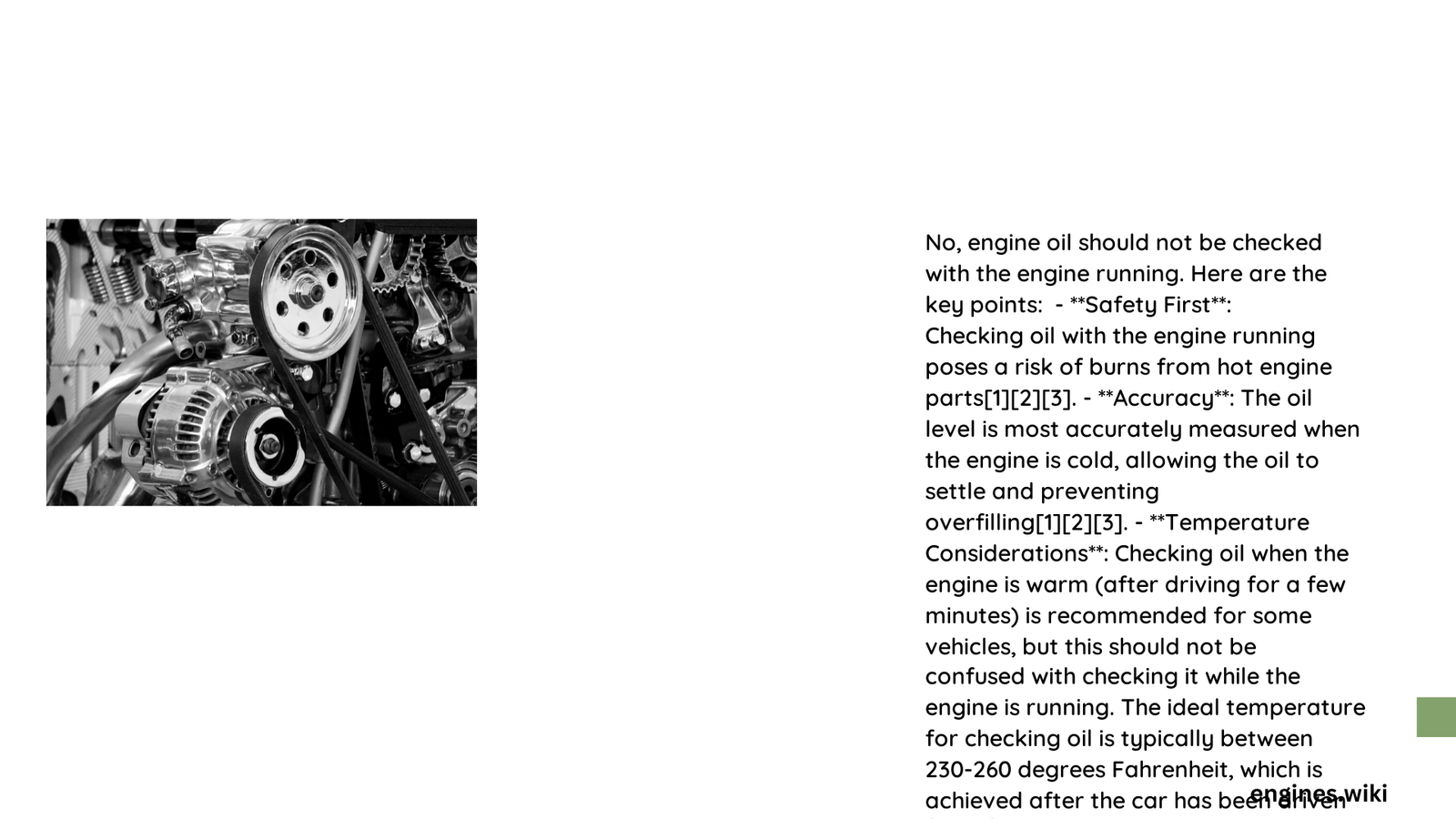Engine oil checking is a critical maintenance task that requires precision and careful technique. Many vehicle owners wonder whether they should check their engine oil while the engine is running, which can potentially lead to misleading measurements and incorrect maintenance decisions. Understanding the correct method for oil level assessment is crucial for maintaining optimal engine performance and preventing potential long-term damage.
What Happens When You Check Oil with a Running Engine?
Checking engine oil while the engine is running can provide inaccurate and potentially misleading information about your vehicle’s oil level and condition. Here’s why:
Temperature and Oil Viscosity Impact
| Temperature Condition | Oil Behavior | Measurement Accuracy |
|---|---|---|
| Hot (Running Engine) | Thin and Fluid | Highly Inaccurate |
| Cool/Slightly Warm | Settled and Stable | Precise Measurement |
Key Reasons to Avoid Running Engine Oil Checks
- Inaccurate Oil Level Reading
- Oil circulates rapidly during engine operation
- Prevents accurate settlement in oil pan
-
Leads to potential misinterpretation of actual oil volume
-
Risk of Incorrect Maintenance Decisions
- Hot oil provides false volume representation
- May cause unnecessary or delayed oil changes
- Potential engine damage from misunderstood oil conditions
Recommended Oil Checking Procedure

When to Check Engine Oil
✅ Best Practices:
– Check before starting the engine
– Wait 5-10 minutes after turning off the engine
– Ensure vehicle is parked on level ground
Step-by-Step Oil Level Verification
Preparation
- Park vehicle on flat surface
- Engage parking brake
- Turn off engine
- Wait recommended cooling period
Dipstick Inspection Process
- Locate oil dipstick (typically brightly colored handle)
- Remove and wipe clean with lint-free cloth
- Reinsert completely
- Remove and check oil level markings
- Verify oil is between minimum and maximum indicators
Professional Insights on Oil Checking
Expert Recommendations
Automotive technicians consistently advise:
– Never check oil immediately after driving
– Allow 10-15 minutes for oil to settle
– Use consistent checking method
– Inspect oil color and consistency during checks
Common Misconceptions
❌ Myths About Oil Checking:
– Running engine provides accurate reading
– Oil level is always consistent
– Temperature doesn’t affect measurement
Advanced Oil Maintenance Tips
Frequency of Checks
- Monthly for most vehicles
- Every 1,000 miles for older vehicles
- Follow manufacturer’s specific guidelines
Warning Signs During Inspection
- Milky or foamy oil texture
- Dark, gritty appearance
- Significant level variations
- Burning smell
Technical Considerations
Modern Vehicle Variations
Some contemporary vehicles feature:
– Electronic oil monitoring systems
– Advanced dipstick designs
– Integrated temperature compensation
Safety Precautions
⚠️ Important Safety Notes:
– Avoid touching hot engine components
– Use protective gloves
– Work in well-ventilated area
– Keep clean rags nearby
Conclusion
Checking engine oil requires careful technique and understanding of automotive maintenance principles. By following professional guidelines and avoiding running engine measurements, vehicle owners can ensure accurate oil level assessment and prolonged engine health.
